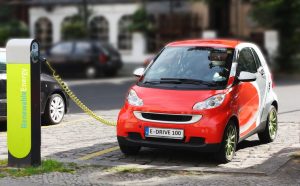
Professor Byoungwoo Kang and his research team at POSTECH have discovered a new way to charge electric cars quickly and efficiently. Their new Li-ion battery electrode material is capable of achieving high power capability and high-energy density per volume, without sacrificing particle size.
Electric vehicles are powered exclusively by lithium ion batteries; unfortunately, there are some drawbacks to this technology. Li-ion batteries suffer from slow charging times and weak power, which can significantly impact the overall performance of the vehicle.
With the goal in mind of improving on the current battery options, Professor Kang and his research team worked in conjunction with Dr. Minkyung Kim of the Department of Materials Science and Engineering at POSTECH as well as Professor Won-Sub Yoon from the Department of Energy Science at Sungkyunkwan University to make this idea a reality.
Together, these engineers, researchers, and scientists have proven successfully that high power can be produced when charging and discharging Li-ion battery materials. This can be done by dramatically reducing the time needed to charge and discharge, without having to reduce the size of the particles used.
To aid the Li-ion batteries in fast charging and discharging, engineers reduced the particle size of the electrode materials used. Unfortunately, reducing the particle size resulted in decreasing the volumetric energy density of the batteries.
In order to counteract this, the research team relied on an intermediate phase during the transition. If this phase is successfully formed during charging and discharging, the battery can generate high power without sacrificing particle size or high energy density. This new technology could lead to the development and commercializing of long-lasting Li-ion batteries.
This intermediate phase offers other benefits to the battery besides extra power and longevity. The phase also has the capacity to assist in creating and growing an entirely new phase within the particle. This additional phase can help improve the speed of insertion, while also helping with the removal of lithium within the particle. The end result is a cell that can charge and discharge at significantly higher speeds, thanks to creating a homogenous electrochemical reaction in the electrode.
The new battery system with the synthesized electrodes is capable of charging up to 90% in about 6 minutes, and discharging up to 54% in a mere 18 seconds – significantly faster than the Li-ion batteries currently available.
The research teams intend to continue along this line of study and hope to create a powerful, long-lasting battery that will keep electric cars on the road longer than ever before.
